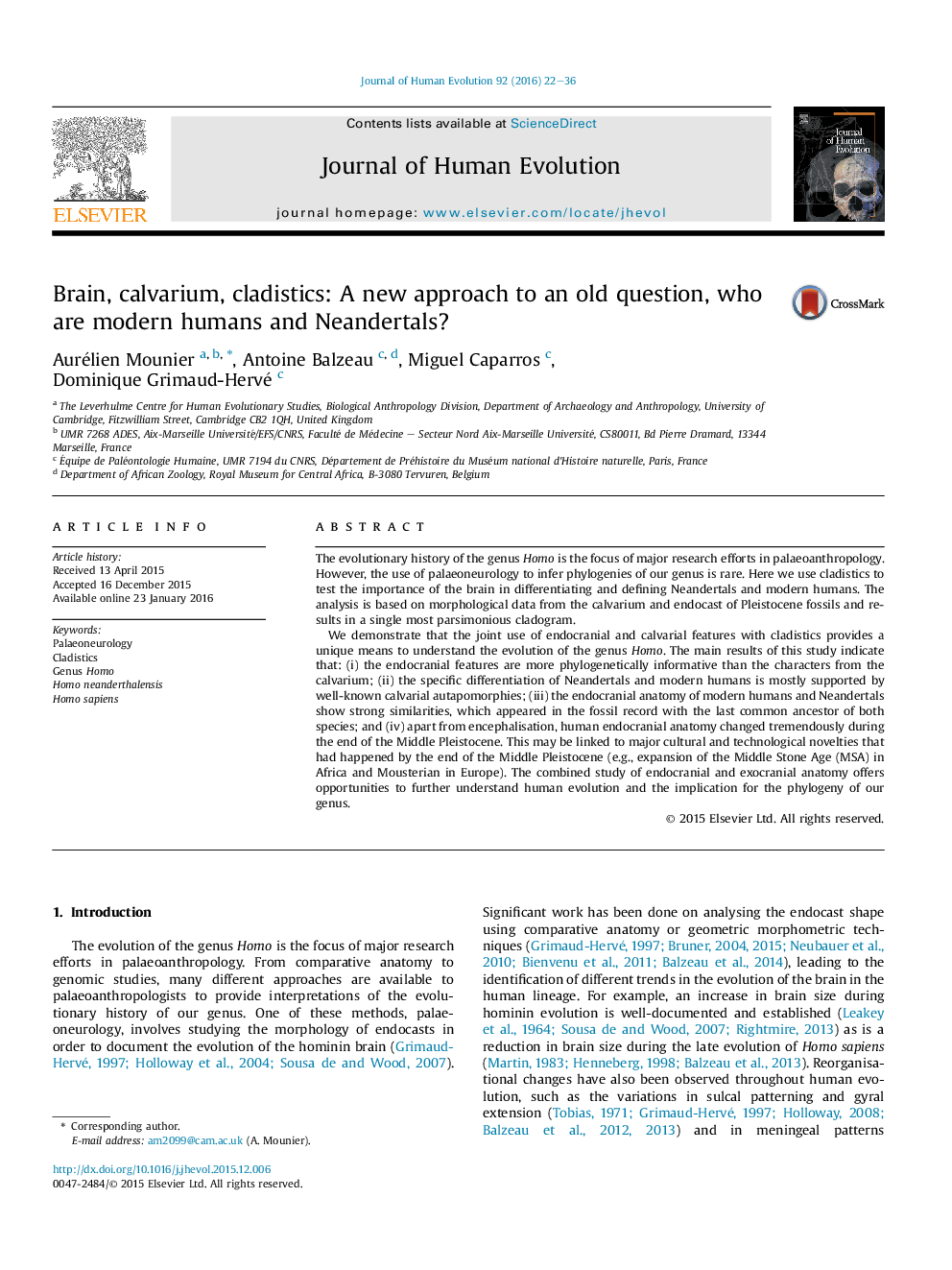| کد مقاله | کد نشریه | سال انتشار | مقاله انگلیسی | نسخه تمام متن |
|---|---|---|---|---|
| 4555812 | 1628157 | 2016 | 15 صفحه PDF | دانلود رایگان |

The evolutionary history of the genus Homo is the focus of major research efforts in palaeoanthropology. However, the use of palaeoneurology to infer phylogenies of our genus is rare. Here we use cladistics to test the importance of the brain in differentiating and defining Neandertals and modern humans. The analysis is based on morphological data from the calvarium and endocast of Pleistocene fossils and results in a single most parsimonious cladogram.We demonstrate that the joint use of endocranial and calvarial features with cladistics provides a unique means to understand the evolution of the genus Homo. The main results of this study indicate that: (i) the endocranial features are more phylogenetically informative than the characters from the calvarium; (ii) the specific differentiation of Neandertals and modern humans is mostly supported by well-known calvarial autapomorphies; (iii) the endocranial anatomy of modern humans and Neandertals show strong similarities, which appeared in the fossil record with the last common ancestor of both species; and (iv) apart from encephalisation, human endocranial anatomy changed tremendously during the end of the Middle Pleistocene. This may be linked to major cultural and technological novelties that had happened by the end of the Middle Pleistocene (e.g., expansion of the Middle Stone Age (MSA) in Africa and Mousterian in Europe). The combined study of endocranial and exocranial anatomy offers opportunities to further understand human evolution and the implication for the phylogeny of our genus.
Journal: Journal of Human Evolution - Volume 92, March 2016, Pages 22–36